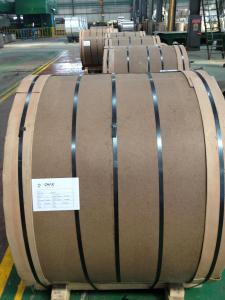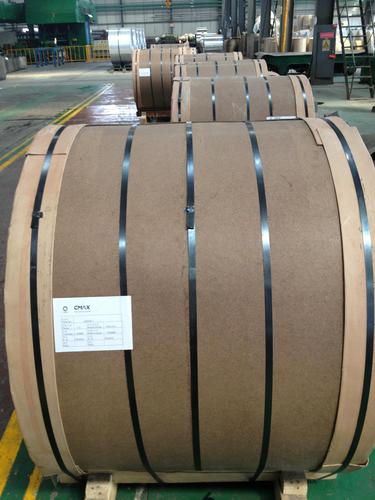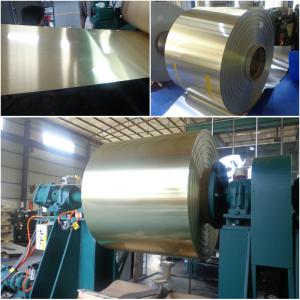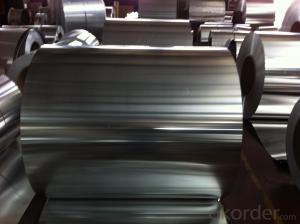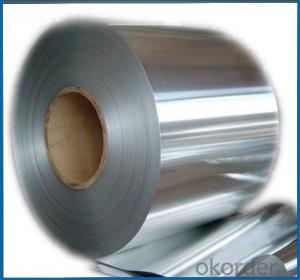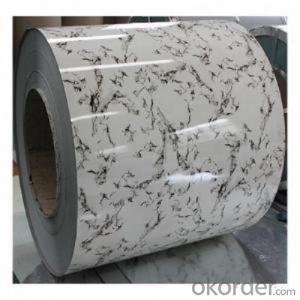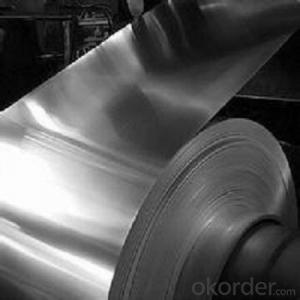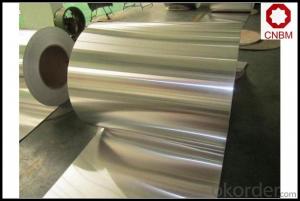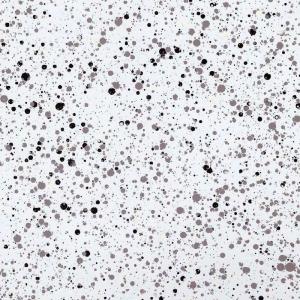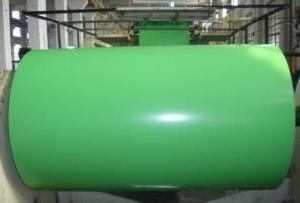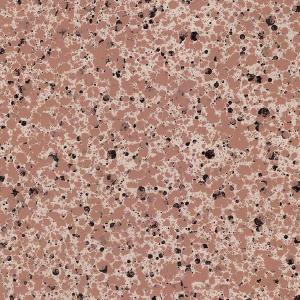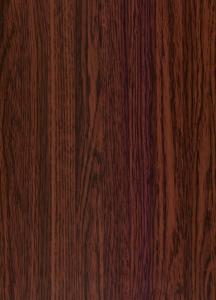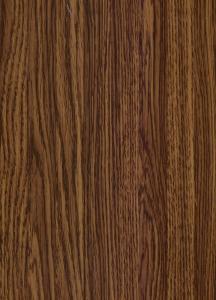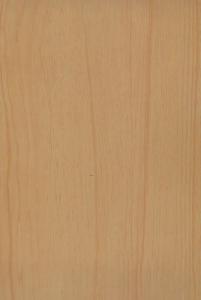Chocolate Brown Aluminum Coil
- Loading Port:
- China Main Port
- Payment Terms:
- TT OR LC
- Min Order Qty:
- -
- Supply Capability:
- -
OKorder Service Pledge
Quality Product, Order Online Tracking, Timely Delivery
OKorder Financial Service
Credit Rating, Credit Services, Credit Purchasing
You Might Also Like
Specifications
1.flat mill finished surface.
2.without oxidation and scratch.
3.high quaity and the best service.
4.long-term of cooperation
Plain Aluminium sheet
1.Alloy : 1100 ,1050,1060 ,3003 ,5052,5005 ,5754,6061 ,8011
2.Temper: H12,h14,h16,h18,h24,h26,O
3.Thickness: form 0.12mm to 20mm ,
4.Size : ,1000 mm X 2000mm ;1220 mm x 2440 mm
5.Surface filmed with pvc or paper inter to profect the surface .
6.Packing :seaworthy wooden pallets
- Q: What’s the standard of tensile strength and ductility of aluminum coil 3003?
- Detailed description can help resolve problems quickly. Performance and status is a related. As aluminum coil is usually semi-hard, the tensile strength is greater than or equals 150, ductility is greater than or equals 12.
- Q: What are the different tensile strengths of aluminum coils?
- The tensile strength of aluminum coils can vary depending on the specific alloy and temper of the aluminum used. Aluminum alloys commonly used for coils include 1100, 3003, 5052, and 6061. The tensile strength of these alloys can range from approximately 13,000 psi (90 MPa) for 1100 aluminum to around 45,000 psi (310 MPa) for 6061 aluminum. The temper of the aluminum also plays a significant role in determining its tensile strength. The most common temper for aluminum coils is H14, which means the material has been strain-hardened and partially annealed to achieve a balance of strength and formability. Other tempers such as H18, H24, and H32 can result in higher tensile strengths, whereas softer tempers like O (annealed) or H12 can have lower tensile strengths. It is important to note that these values are general ranges and can vary slightly depending on the specific manufacturer and production process. Additionally, factors such as thickness, width, and surface treatment of the aluminum coils can also influence their tensile strength. Therefore, it is recommended to consult the manufacturer's specifications or test the specific aluminum coil to accurately determine its tensile strength.
- Q: How much fluorocarbon and polyester paint should be used in production of aluminum coil and aluminum-plastic panel?
- In theory, one kilogram paint can spray 6 square kilometers for your required thickness. Then you can calculate the total areas.
- Q: I heard that clay pots and aluminum cans are great caves for my fish to breed in but will the can rust???
- Aluminium will not rust.
- Q: What are the different grades of aluminum used in coils?
- Coils utilize various grades of aluminum, each boasting unique properties and applications. Notable grades encompass: 1. The 1000 series, a commercially pure aluminum, excels in fighting corrosion. It finds its niche in chemical processing devices and marine components, where corrosion resistance reigns supreme. 2. The 3000 series alloys shine with moderate strength and impressive formability. Their versatility sees them employed in cooking utensils, heat exchangers, and general sheet metal fabrication. 3. The 5000 series grade impresses with its weldability and corrosion resistance. Marine settings, transportation, and structural components all benefit from its presence. 4. The 6000 series alloys blend strength, formability, and corrosion resistance. As a result, they abound in architectural applications - window frames, doors, and curtain walls. 5. The 7000 series grade touts high strength and toughness. It's a favorite contender within aerospace, sporting goods, and automotive realms, where robustness is paramount. These examples merely scratch the surface of the aluminum grades employed in coils. Selecting the appropriate grade hinges on application-specific criteria like strength, corrosion resistance, formability, and weldability.
- Q: Can aluminum coils be customized or fabricated into specific shapes?
- Indeed, it is possible to customize or fabricate aluminum coils into desired shapes. Aluminum possesses remarkable formability and can be effortlessly shaped through diverse fabrication techniques such as rolling, bending, stamping, and extrusion. By employing these processes, aluminum coils can be converted into specific forms like sheets, plates, tubes, and profiles to cater to the unique demands of different applications. Moreover, aluminum can also be welded, joined, or cut to further tailor its shape and dimensions. The adaptability of aluminum coils in terms of customization renders them highly favored across various industries, including automotive, aerospace, construction, and manufacturing.
- Q: How are aluminum coils joined together?
- Aluminum coils are commonly joined together through a process called welding. Welding is the process of permanently joining two metal pieces together by melting their edges and allowing them to cool and fuse. There are several methods of welding that can be used to join aluminum coils, including gas tungsten arc welding (GTAW), gas metal arc welding (GMAW), and friction stir welding (FSW). GTAW, also known as TIG (tungsten inert gas) welding, is a precise and versatile method commonly used for joining aluminum coils. It involves a non-consumable tungsten electrode that produces an electric arc to melt the base metal, while an inert gas shield (usually argon) protects the weld zone from atmospheric contamination. GMAW, also known as MIG (metal inert gas) welding, is another common method used for joining aluminum coils. It uses a consumable wire electrode that is fed through a welding gun, along with a shielding gas to protect the weld zone from oxidation. FSW is a solid-state joining process that uses a rotating tool to generate friction heat between the aluminum coils. The heat softens the metal, allowing the tool to stir and join the materials together without melting them completely. These welding methods are widely utilized in various industries, including automotive, aerospace, construction, and manufacturing, due to their ability to provide strong and reliable joints between aluminum coils. Additionally, advancements in technology have led to the development of specialized welding techniques and equipment, ensuring efficient and high-quality joining of aluminum coils.
- Q: Can aluminum coils be used in the manufacturing of lighting fixtures?
- Yes, aluminum coils can be used in the manufacturing of lighting fixtures. Aluminum is a lightweight and durable material that is commonly used in various industries, including the lighting industry. It offers excellent heat dissipation properties, making it suitable for fixtures that generate heat, such as LED lights. Additionally, aluminum coils can be easily shaped and molded into different designs, making them a versatile choice for lighting fixture production.
- Q: ... of aluminum atoms?(mole = 6.022x10^23)
- Believe it or not, you have the proverbial not enough information in this problem. That's because you don't specify the thickness of the aluminum foil. You will certainly need to know that before you can determine the volume of Al and the number of atoms. You will also need the density of Al, but that's easy enough to come by. Just for grins, say the foil is 0.0020 cm thick, and the density of Al foil is 2.70 g/cm^3. If you have an Avogadro's number of Al atoms (1 mole), then you have 27.0 grams of Al (molar mass of Al). If the density of aluminum is 2.7 g/cm^3, then you have a piece of aluminum with a volume of 10.0 cm^3. V = L x W x H .... where H is the thickness of the foil You are given the width and have looked up a thickness, and have calculated the volume. So solve for length. L = V / (WH) = 10 cm^3 / (30.48 cm x 0.0020 cm) L = 164 cm You would need a section of foil 164 cm long to give you approximately 1 mol of aluminum atoms if the thickness is 0.02 mm.
- Q: Can aluminum coils be used in the production of aluminum foil?
- Yes, aluminum coils can be used in the production of aluminum foil. Aluminum coils are typically made by rolling ingots of aluminum between heavy rollers to create thin, flat sheets. These coils can then be further processed to create aluminum foil. The coils are unwound and fed through a series of rolling mills which gradually reduce the thickness of the metal until the desired thickness for aluminum foil is achieved. The foil is then cut into sheets or rolls for packaging and distribution. Aluminum coils provide a cost-effective and efficient way to produce large quantities of aluminum foil.
Send your message to us
Chocolate Brown Aluminum Coil
- Loading Port:
- China Main Port
- Payment Terms:
- TT OR LC
- Min Order Qty:
- -
- Supply Capability:
- -
OKorder Service Pledge
Quality Product, Order Online Tracking, Timely Delivery
OKorder Financial Service
Credit Rating, Credit Services, Credit Purchasing
Similar products
Hot products
Hot Searches
Related keywords
